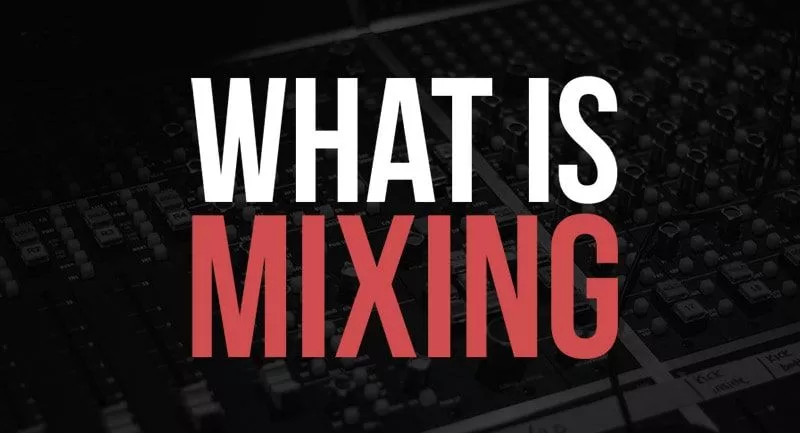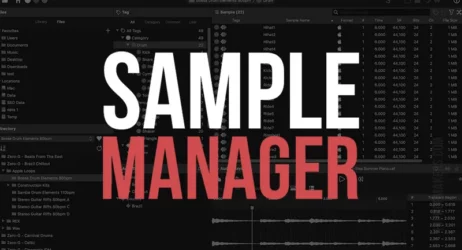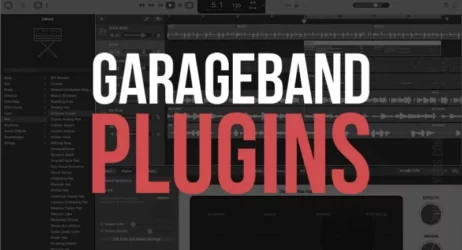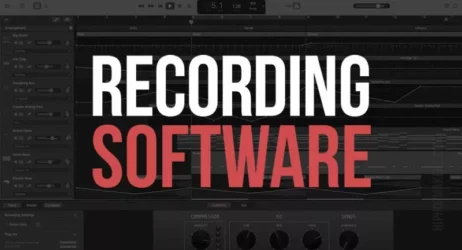This guide will answer what is mixing in music production, why it is important, how it is different from mastering, and basic mixing tips to get you started.
What Is Mixing In Music?
Mixing is the process of balancing and blending all elements of a recording to create a cohesive whole. This includes adjusting levels, adding equalization, and adding effects as needed.
- What Is Mixing in Music
- Mixing vs. Mastering
- Why Is Mixing So Important In Music
- How Do You Mix Beats
- What Are The Basics Of Mixing
- How Do I Learn Audio Mixing
- Should I Mix While Recording
- Popular Audio Mixing Books
What Is Mixing in Music?
Mixing is an essential step in the production process, and it can make or break your final product. The goal of mixing is to create a sonically pleasing and cohesive recording.
This involves balancing and blending all elements of the track and adjusting levels, EQing, and adding effects as needed.
Mixing is what takes your rough recording and turns it into what you hear on the radio, what you download from iTunes, what plays on Spotify, and what your listeners will listen to from their speakers.

The top producers and mixers in the world can take a so-so recording and make it sound incredible, but it takes skill and experience to get there.
Usually, the mixing process takes longer than the recording itself. However, this can vary depending on what you are mixing, your skill level, and what sort of computer and software equipment you have.
What Equipment Do You Need For Mixing?
The equipment you will need for mixing will vary depending on what type of music you are working with.
If you are mixing hip-hop, you might use software such as FL Studio or Logic Pro. If you’re working with electronic music, you might use software such as Ableton Live.
Most importantly, you will need a good pair of headphones and studio monitors. You will use studio monitors to listen to what you are mixing.
Studio monitors are different from what you might use for your day-to-day listening, such as headphones or earbuds. Studio monitors are designed to give you an accurate representation of what your mix will sound like when it’s played on other speakers.
In addition, you will need what is known as a DAW (digital audio workstation). This is what you use to record, edit, and mix your music.
Related: What Is A DAW | Best Free DAWs
What Are The Different Types of Mixing?
Mixing is often divided into two categories: corrective mixing and creative mixing.
Corrective mixing is what you do to make a track sound good. This includes balancing levels, EQing, and adding effects as needed.
Creative mixing is what you do to make a track sound excellent. This includes adding stylistic touches and effects to make the track stand out. This can consist of using different types of compression, applying creative EQing and effects, etc.
What Is The Difference Between Mixing And Mastering?
Mixing and mastering are two separate things, and they often go hand in hand. Mastering is usually considered the last step of mixing.
Mixing takes all of the elements in a recording and balances them together to create a cohesive whole. This includes adjusting levels, EQ, and adding effects as needed.
Mastering takes all of the mixed tracks and adjusts the levels, EQ, and compression to create a sonically pleasing final product.
While many people think mixing is what you do after mastering, it is actually the other way around. Mastering should be the final step in the production process, and it should only be done after all of the tracks have been mixed.
The other difference is what each one sounds like: mixing generally has a raw and unprocessed sound, while mastering gives the track a more polished and professional sound.
Related: What Is Mastering
Why Is Mixing So Important In Music?
Mixing is what turns what you hear in your head into what other people hear. It is what makes each track sound cohesive and polished.
If you are not happy with the way your recording sounds, or if it doesn’t sound quite like what you imagined, then you need to mix it. Without mixing, all you have are individual recordings that are hard to listen to on their own.
The goal of mixing is to make all of the elements sound good together and create a sonically pleasing final product. This is what makes your recording from a rough demo to a polished song that you can be proud of.
How Do You Mix Beats?
Mixing beats is not an easy process. You must know what you are doing and what each instrument represents in the song. When mixing, you are essentially creating a piece of new music by combining the best elements of each track.
You must have a good ear for music and recognize what each instrument is doing, what instruments represent in the song, what they contribute to the overall sound, and what a particular instrument’s function is.
You can mix beats in a number of ways, but the most common way is to use what is known as a mixer. A mixer allows you to control each individual track that is being recorded. This includes what types of effects you would like to put on the track, what level each track should be at, and what type of panning you would like to do.
You can also use free VST plugins or mixing tools like Nectar to make your life easier, but what it comes down to is what you hear and what you know.
Related: 35 Best Free Mixing VST Plugins
What Are The Basics Of Mixing?
The first step to mixing music is to have the best possible source material. If you create your own beats, you must mix them as if they were going on an album because what you send out now will affect what people think of later.
First, create a really fantastic beat with all of your instruments. Most likely, your beat is going to have a kick, snare, hi-hat, and other percussions.
Once you have created your beat, it is time to mix it. The first step is to make sure that the levels are correct. You don’t want any sound overpowering another. You can use a compressor to ensure this doesn’t happen.
A compressor is what brings everything together so that everything is heard clearly.
After making sure all of your instruments are mixed equally, it’s time to add in effects. You can choose whatever tone or effects you want. Just remember that what you put in is what will come out, so make it sound good.
Related: 7 Tips For Mixing Vocals
How Do I Learn Audio Mixing?
Mixing is what gives you the final polished sound of your song. The mixdown makes your record sound clean. This is what people will hear on the radio, in their cars, or on their MP3 players.
To become a great mixer, it’s essential that you first understand what mixing is and what it does. You should also learn about the different elements that make up a mix, such as EQ, compression, and reverb.
Once you have a basic understanding of mixing, it’s time to start learning how to do it yourself. You can start by reading books or online tutorials or even taking a class.
When you’re ready to start mixing, make sure you have what you need to do it well—clean low-end frequencies, isolated vocals, and your other instruments.
Related: 15 Best Audio Mixing Courses Online
Should I Mix While Recording?
It’s a question we often hear from musicians who are new to the recording studio. There is nothing wrong with mixing while recording, but it does mean you’ll have to do the whole mixing process again when you’re done.
Mixing is all about what goes WHERE and what happens WHEN, and if you change what happens when, then everything downstream from it changes as well.
We generally recommend mixing after recording, so you can spend a lot more time on what happens when in the earlier stages of the mixing process. This way, you can make sure that what you record is the best it can be and won’t need a lot of post-production work.
Popular Audio Mixing Books
Here are the most popular audio mixing books on Amazon.
Last update on 2025-09-28 / Affiliate Disclaimer
Summary of Mixing
Mixing is an essential process in music production, and it can make or break a track. By understanding the basics of mixing and what goes into it, you can create better-sounding tracks that stand out from the rest.
You don’t need to be a professional mixing engineer to produce great-sounding music, but it helps to have some basic knowledge of the process.
There are free VST plugins and other software that can help you get started, and with a bit of practice, you’ll be able to produce mixes that sound great.
I hope you now have a good understanding of audio mixing and how it applies to music production.
Related: What Is Panning In Music?











